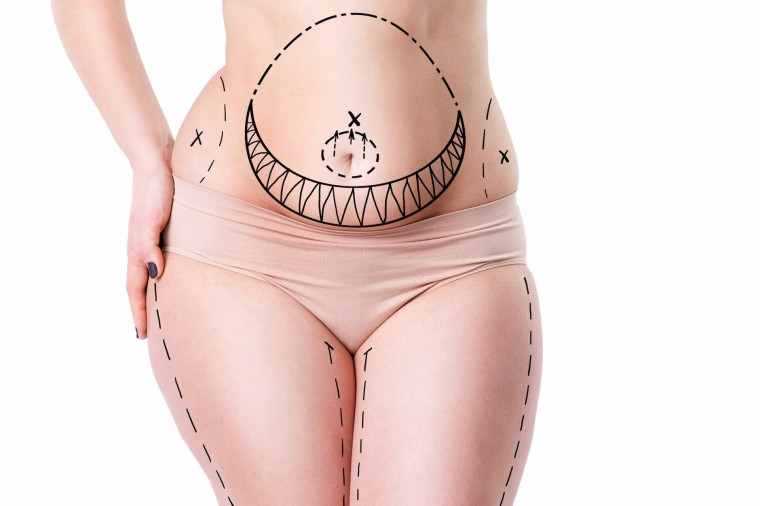
Abdominoplasty (Tummy Tuck) in Istanbul, Turkey – Dr. Hakkı Izmirli
Abdominoplasty (Tummy Tuck) in Istanbul, Turkey – Dr. Hakkı Izmirli
If you are seeking a firmer, flatter abdomen and want to address excess skin, muscle separation or post-pregnancy changes, an abdominoplasty (tummy tuck) may be the ideal solution. At the clinic of Dr. Hakkı İzmirli in Istanbul, we specialise in advanced body contouring for international patients, offering high-quality care, English-speaking support and tailored packages for patients from Germany, UK, Austria, Switzerland and Romania. In this comprehensive guide, you will learn what abdominoplasty involves, who the right candidate is, how the procedure is performed, what recovery looks like, and why Turkey is a top destination for “tummy tuck Turkey”.
What is Abdominoplasty / Tummy Tuck?
An abdominoplasty, commonly known as a tummy tuck, is a surgical procedure that removes excess skin and fat from the abdomen while tightening the underlying abdominal muscles (fascia) and repositioning the remaining skin for a smoother, more toned appearance.
At our Istanbul clinic, we offer full abdominoplasty as well as mini-abdominoplasty for less extensive correction, depending on your anatomy and goals. The ideal procedure will be determined during your consultation.
We commonly address the following conditions: sagging or bulging abdomen post-pregnancy, muscle separation (diastasis recti), excess skin following weight loss, and cases where liposuction alone is insufficient.
By combining abdominoplasty with liposuction or other body-contouring techniques, we achieve more comprehensive results and enhanced waist-and-abdominal shape.
Who is a Good Candidate?
Good candidates for a tummy tuck typically:
Are in good overall health and at (or near) a stable body weight.
Have realistic expectations regarding outcome and scar (the incision is typically placed low, near the bikini line).
Exhibit excess abdominal skin or fat, or muscle separation that cannot be corrected by exercise alone.
Are not planning significant future weight loss or pregnancies, as these can affect long-term results.
During your international-patient friendly consultation, we assess your body contour, skin elasticity, abdominal muscle integrity and personal goals, then recommend the appropriate technique and timeline.
The Procedure & Technique in Istanbul
The tummy tuck procedure is performed under general anaesthesia in a fully accredited hospital setting in Istanbul. The typical steps include:
Pre-operative photographic documentation and marking of abdominal region.
Incision placed low on the abdomen (bikini-line) — skin and fat above this area are lifted, underlying fascia tightened with sutures. The navel may be repositioned.
Excess skin and fat removed; liposuction may be used at the flanks, hips or lower abdomen for enhanced contour.
Skin redraped, incision closed, drains may be placed and compression garments applied.
International patients stay 1-2 nights in the hospital and receive full post-operative care including English-speaking nursing support, accommodation coordination and WhatsApp follow-up. Choosing Turkey for your tummy tuck means access to experienced surgeons, cost-efficient high quality care and a seamless travel-friendly package.
Recovery & Results
Post-operatively, you will wear a compression garment for approximately 6-8 weeks. Light walking is encouraged early to promote circulation; heavier exercise is generally deferred until 8-12 weeks depending on your recovery.
Swelling and bruising will gradually subside; the final contour is usually visible after 3-6 months. Patients often find improved abdominal firmness, waist definition and enhanced confidence in their appearance.
Important lifestyle aspects: maintaining a stable weight, eating nutritiously, and avoiding significant weight fluctuations or future pregnancies will help maintain the results long-term. We provide detailed post-care instructions tailored to international patients, including wound care, activity guidelines and follow-up via WhatsApp.
Costs, International Patients and Why Choose Istanbul?
Turkey has become a leading destination for cosmetic surgery because of expert surgeons, modern hospitals and competitive pricing without compromising quality. For tummy tuck Turkey is no exception — patients from Germany, UK, Austria, Switzerland and Romania choose Istanbul for its convenient travel, bilingual service and high standards.
Cost varies according to technique (standard vs mini-abdominoplasty), amount of skin/fat to remove, whether liposuction or a “mommy makeover” combination is involved, and length of hospital stay. At our clinic we provide a transparent quote inclusive of hospital, surgeon, anaesthesia and aftercare, designed specifically for international patients.
When selecting your surgeon, view before/after galleries, check patient testimonials (particularly international cases) and ensure the hospital accreditation is clear. At Dr. Hakkı Izmirli’s clinic you’ll find over 20 years of experience, specialised body contouring focus and dedicated support for overseas patients.
Conclusion
If you’re ready to transform your abdomen and restore slimmer, smoother contours with a safe and expertly handled tummy tuck, now is the time to act. At our Istanbul clinic we specialise in abdominoplasty (tummy tuck) for international patients, offering comprehensive care, personalised planning and stellar results. Contact us today via WhatsApp to schedule your free virtual consultation, receive your tailored surgery plan and travel-package, and take the first step toward your confident new silhouette. Your transformation awaits.
Book a Consultation on WhatsApp



